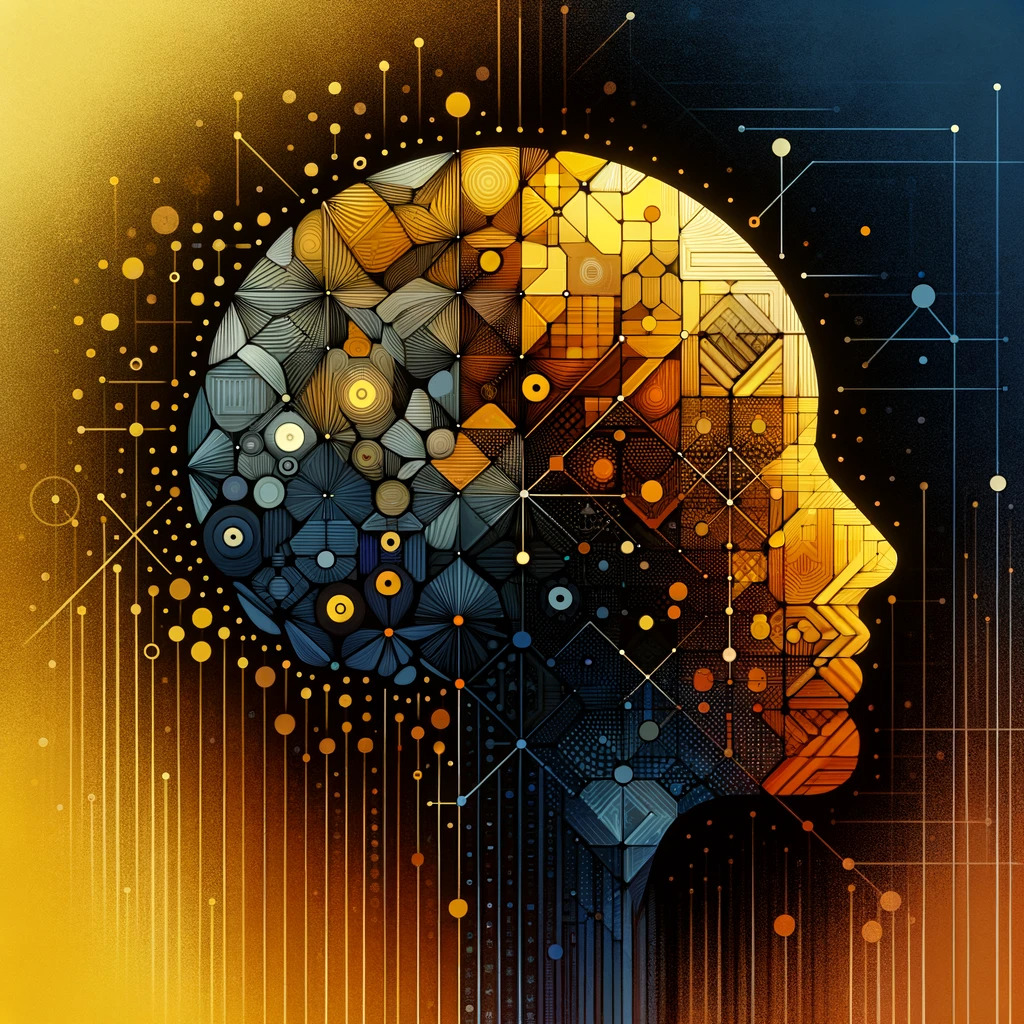[fusion_builder_container admin_label=”Content” type=”flex” hundred_percent=”no” hundred_percent_height=”no” hundred_percent_height_scroll=”no” align_content=”stretch” flex_align_items=”flex-start” flex_justify_content=”space-between” hundred_percent_height_center_content=”yes” equal_height_columns=”no” container_tag=”div” hide_on_mobile=”small-visibility,medium-visibility,large-visibility” status=”published” padding_right_small=”0px” padding_bottom_small=”0px” padding_left_small=”0px” padding_top=”0px” border_style=”solid” box_shadow=”no” box_shadow_blur=”0″ box_shadow_spread=”0″ gradient_start_position=”0″ gradient_end_position=”100″ gradient_type=”linear” radial_direction=”center center” linear_angle=”180″ background_position=”center center” background_repeat=”no-repeat” fade=”no” background_parallax=”none” enable_mobile=”no” parallax_speed=”0.3″ background_blend_mode=”none” video_aspect_ratio=”16:9″ video_loop=”yes” video_mute=”yes” absolute=”off” absolute_devices=”small,medium,large” sticky=”off” sticky_devices=”small-visibility,medium-visibility,large-visibility” sticky_transition_offset=”0″ scroll_offset=”0″ animation_direction=”left” animation_speed=”0.3″ filter_hue=”0″ filter_saturation=”100″ filter_brightness=”100″ filter_contrast=”100″ filter_invert=”0″ filter_sepia=”0″ filter_opacity=”100″ filter_blur=”0″ filter_hue_hover=”0″ filter_saturation_hover=”100″ filter_brightness_hover=”100″ filter_contrast_hover=”100″ filter_invert_hover=”0″ filter_sepia_hover=”0″ filter_opacity_hover=”100″ filter_blur_hover=”0″ padding_right=”0px” padding_bottom=”0px” padding_left=”0px”][fusion_builder_row][fusion_builder_column type=”1_1″ layout=”3_5″ align_self=”auto” content_layout=”column” align_content=”flex-start” content_wrap=”wrap” center_content=”no” target=”_self” hide_on_mobile=”small-visibility,medium-visibility,large-visibility” sticky_display=”normal,sticky” type_medium=”3_4″ order_medium=”0″ order_small=”0″ hover_type=”none” border_style=”solid” box_shadow=”no” box_shadow_blur=”0″ box_shadow_spread=”0″ background_type=”single” gradient_start_position=”0″ gradient_end_position=”100″ gradient_type=”linear” radial_direction=”center center” linear_angle=”180″ background_position=”left top” background_repeat=”no-repeat” background_blend_mode=”none” animation_direction=”left” animation_speed=”0.3″ filter_type=”regular” filter_hue=”0″ filter_saturation=”100″ filter_brightness=”100″ filter_contrast=”100″ filter_invert=”0″ filter_sepia=”0″ filter_opacity=”100″ filter_blur=”0″ filter_hue_hover=”0″ filter_saturation_hover=”100″ filter_brightness_hover=”100″ filter_contrast_hover=”100″ filter_invert_hover=”0″ filter_sepia_hover=”0″ filter_opacity_hover=”100″ filter_blur_hover=”0″ last=”true” border_position=”all” element_content=”” margin_top_small=”0px” first=”true” min_height=”” link=””][fusion_tagline_box content_alignment=”left” link=”” button=”” linktarget=”_self” modal=”” button_size=”” button_type=”” title=”QWxsIGh1bWFucyB2YXJ5IGluIHRlcm1zIG9mIHRoZWlyIG5ldXJvY29nbml0aXZlIGFiaWxpdGllcy4=” description=”” hide_on_mobile=”small-visibility,medium-visibility,large-visibility” class=”” id=”” fusion_font_family_title_font=”” fusion_font_variant_title_font=”” title_font_size=”” title_line_height=”” title_letter_spacing=”” title_text_transform=”” title_color=”var(–awb-color8)” hue=”” saturation=”” lightness=”” alpha=”” description_font_size=”” content_font_size=”” backgroundcolor=”” shadow=”no” shadowopacity=”0.7″ border=”1″ bordercolor=”” highlightposition=”left” button_border_radius_top_left=”” button_border_radius_top_right=”” button_border_radius_bottom_right=”” button_border_radius_bottom_left=”” padding_top=”” padding_right=”” padding_bottom=”” padding_left=”” margin_top=”” margin_bottom=”” animation_type=”” animation_direction=”left” animation_color=”” animation_speed=”0.3″ animation_delay=”0″ animation_offset=”” /][fusion_title title_type=”text” rotation_effect=”bounceIn” display_time=”1200″ highlight_effect=”circle” loop_animation=”off” highlight_width=”9″ highlight_top_margin=”0″ before_text=”” rotation_text=”” highlight_text=”” after_text=”” title_link=”off” link_url=”” link_target=”_self” hide_on_mobile=”small-visibility,medium-visibility,large-visibility” sticky_display=”normal,sticky” class=”” id=”” content_align_medium=”” content_align_small=”” content_align=”left” size=”4″ animated_font_size=”” fusion_font_family_title_font=”” fusion_font_variant_title_font=”” font_size=”” line_height=”” letter_spacing=”” text_transform=”” text_color=”var(–awb-custom_color_4)” hue=”” saturation=”” lightness=”” alpha=”” animated_text_color=”” text_shadow=”no” text_shadow_vertical=”” text_shadow_horizontal=”” text_shadow_blur=”0″ text_shadow_color=”” text_stroke=”no” text_stroke_size=”1″ text_stroke_color=”” text_overflow=”none” margin_top_medium=”” margin_right_medium=”” margin_bottom_medium=”” margin_left_medium=”” margin_top_small=”” margin_right_small=”” margin_bottom_small=”” margin_left_small=”” margin_top=”” margin_right=”” margin_bottom=”” margin_left=”” margin_top_mobile=”” margin_bottom_mobile=”” gradient_font=”no” gradient_start_color=”” gradient_end_color=”” gradient_start_position=”0″ gradient_end_position=”100″ gradient_type=”linear” radial_direction=”center center” linear_angle=”180″ highlight_color=”” style_type=”default” sep_color=”” link_color=”” link_hover_color=”” animation_type=”” animation_direction=”left” animation_color=”” animation_speed=”0.3″ animation_delay=”0″ animation_offset=””]
Neurodiversity
[/fusion_title][fusion_text columns=”” column_min_width=”” column_spacing=”” rule_style=”” rule_size=”” rule_color=”” hue=”” saturation=”” lightness=”” alpha=”” content_alignment_medium=”” content_alignment_small=”” content_alignment=”left” hide_on_mobile=”small-visibility,medium-visibility,large-visibility” sticky_display=”normal,sticky” class=”” id=”” margin_top=”” margin_right=”” margin_bottom=”” margin_left=”” fusion_font_family_text_font=”” fusion_font_variant_text_font=”” font_size=”” line_height=”” letter_spacing=”” text_transform=”” text_color=”” animation_type=”” animation_direction=”left” animation_color=”” animation_speed=”0.3″ animation_delay=”0″ animation_offset=”” logics=””]
As a concept, neurodiversity recognizes and respects this variety, emphasizing that there is no one universal “normal” brain. It suggests that neurological differences like autism, ADHD, dyslexia, Tourette’s syndrome, and others, are simply variations of the human brain, rather than diseases or defects.
Neurodivergent people learn, experience, interact with, and interpret the world in different ways than neurotypical people.
[/fusion_text][fusion_title title_type=”text” rotation_effect=”bounceIn” display_time=”1200″ highlight_effect=”circle” loop_animation=”off” highlight_width=”9″ highlight_top_margin=”0″ before_text=”” rotation_text=”” highlight_text=”” after_text=”” title_link=”off” link_url=”” link_target=”_self” hide_on_mobile=”small-visibility,medium-visibility,large-visibility” sticky_display=”normal,sticky” class=”” id=”” content_align_medium=”” content_align_small=”” content_align=”left” size=”4″ animated_font_size=”” fusion_font_family_title_font=”” fusion_font_variant_title_font=”” font_size=”” line_height=”” letter_spacing=”” text_transform=”” text_color=”var(–awb-custom_color_4)” hue=”” saturation=”” lightness=”” alpha=”” animated_text_color=”” text_shadow=”no” text_shadow_vertical=”” text_shadow_horizontal=”” text_shadow_blur=”0″ text_shadow_color=”” text_stroke=”no” text_stroke_size=”1″ text_stroke_color=”” text_overflow=”none” margin_top_medium=”” margin_right_medium=”” margin_bottom_medium=”” margin_left_medium=”” margin_top_small=”” margin_right_small=”” margin_bottom_small=”” margin_left_small=”” margin_top=”” margin_right=”” margin_bottom=”” margin_left=”” margin_top_mobile=”” margin_bottom_mobile=”” gradient_font=”no” gradient_start_color=”” gradient_end_color=”” gradient_start_position=”0″ gradient_end_position=”100″ gradient_type=”linear” radial_direction=”center center” linear_angle=”180″ highlight_color=”” style_type=”default” sep_color=”” link_color=”” link_hover_color=”” animation_type=”” animation_direction=”left” animation_color=”” animation_speed=”0.3″ animation_delay=”0″ animation_offset=””]
Neurodivergent
[/fusion_title][fusion_text columns=”” column_min_width=”” column_spacing=”” rule_style=”” rule_size=”” rule_color=”” hue=”” saturation=”” lightness=”” alpha=”” content_alignment_medium=”” content_alignment_small=”” content_alignment=”left” hide_on_mobile=”small-visibility,medium-visibility,large-visibility” sticky_display=”normal,sticky” class=”” id=”” margin_top=”” margin_right=”” margin_bottom=”” margin_left=”” fusion_font_family_text_font=”” fusion_font_variant_text_font=”” font_size=”” line_height=”” letter_spacing=”” text_transform=”” text_color=”” animation_type=”” animation_direction=”left” animation_color=”” animation_speed=”0.3″ animation_delay=”0″ animation_offset=”” logics=””]
Neurodivergent is the term for people whose brains function differently in one or more ways than is considered standard or typical. There are many ways that neurodivergence manifests, ranging from very mild ways that most people would never notice to more obvious ways that lead to a person behaving very differently than is standard in society.
[/fusion_text][fusion_title title_type=”text” rotation_effect=”bounceIn” display_time=”1200″ highlight_effect=”circle” loop_animation=”off” highlight_width=”9″ highlight_top_margin=”0″ before_text=”” rotation_text=”” highlight_text=”” after_text=”” title_link=”off” link_url=”” link_target=”_self” hide_on_mobile=”small-visibility,medium-visibility,large-visibility” sticky_display=”normal,sticky” class=”” id=”” content_align_medium=”” content_align_small=”” content_align=”left” size=”4″ animated_font_size=”” fusion_font_family_title_font=”” fusion_font_variant_title_font=”” font_size=”” line_height=”” letter_spacing=”” text_transform=”” text_color=”var(–awb-custom_color_4)” hue=”” saturation=”” lightness=”” alpha=”” animated_text_color=”” text_shadow=”no” text_shadow_vertical=”” text_shadow_horizontal=”” text_shadow_blur=”0″ text_shadow_color=”” text_stroke=”no” text_stroke_size=”1″ text_stroke_color=”” text_overflow=”none” margin_top_medium=”” margin_right_medium=”” margin_bottom_medium=”” margin_left_medium=”” margin_top_small=”” margin_right_small=”” margin_bottom_small=”” margin_left_small=”” margin_top=”” margin_right=”” margin_bottom=”” margin_left=”” margin_top_mobile=”” margin_bottom_mobile=”” gradient_font=”no” gradient_start_color=”” gradient_end_color=”” gradient_start_position=”0″ gradient_end_position=”100″ gradient_type=”linear” radial_direction=”center center” linear_angle=”180″ highlight_color=”” style_type=”default” sep_color=”” link_color=”” link_hover_color=”” animation_type=”” animation_direction=”left” animation_color=”” animation_speed=”0.3″ animation_delay=”0″ animation_offset=””]
Neurotypical
[/fusion_title][fusion_text columns=”” column_min_width=”” column_spacing=”” rule_style=”” rule_size=”” rule_color=”” hue=”” saturation=”” lightness=”” alpha=”” content_alignment_medium=”” content_alignment_small=”” content_alignment=”left” hide_on_mobile=”small-visibility,medium-visibility,large-visibility” sticky_display=”normal,sticky” class=”” id=”” margin_top=”” margin_right=”” margin_bottom=”” margin_left=”” fusion_font_family_text_font=”” fusion_font_variant_text_font=”” font_size=”” line_height=”” letter_spacing=”” text_transform=”” text_color=”” animation_type=”” animation_direction=”left” animation_color=”” animation_speed=”0.3″ animation_delay=”0″ animation_offset=”” logics=””]
Neurotypical refers to someone who has brain functions, behaviors, and processing considered standard or typical. Neurotypical people may have no idea they are neurotypical, because the subject has likely never come up for them before. These people usually hit all their developmental and behavioral milestones at the same time and once grown, they generally move through life without having to wonder if their brains function the same way as others do. About 80% of people globally are neurotypical.
The world is built by neurotypical people for neurotypical people, and consequently much of it makes sense to them. The same cannot be said for the neurodivergent minority. The rules of the neurotypical world often don’t make sense and make life much harder. In such a world, it is the neurotypical person that often becomes the successful one, moves to the top of an organization (community, party, society) and makes decisions that impact everyone. Decisions may be made with the best intentions, but we all see the world only through a certain lens…
This inevitably opens space for discrimination. Discrimination that is not intentional, one that a neurotypical person can be completely blind to. What the neurotypical may be seeing, is lack of proper behavior or performance, disregard for rules, rudeness, ignorance, laziness, disengagement… the list is long. It stems from the gap between what should be displayed according to the “rules and expectations” and the observable reality.
Neurodivergence often cannot be seen. It is not the same as gender, race, ethnicity, class, etc. These differences can be seen. Neurodivergence is more often than not invisible. It shows as unexplainable behavior or performance… or intentionally bad behavior and performance, depending on one’s interpretation.
Lack of knowledge can bring rise to many misconceptions and in case of neurodiversity, it can foster unnecessary discrimination and exclusion. People tend to be afraid of the unknown and opening the topic of neurodiversity, having conversations, being curious and asking questions as well as sharing experiences is critical for building awareness and educating the majority. The neurodiversity movement is not only about awareness, education and prevention of discrimination. Ultimately, it’s about inclusion. It’s about recognizing everyone’s value, potential, abilities and contributions.
We can all take an active part in preventing this type of discrimination by educating ourselves and striving to be more understanding, accepting and less judgmental. We can begin by checking our biases, opinions of others, and assumptions we make about other people.
Maybe some people you perceive as lazy at times, simply need longer recovery times. They may need help in pointing out where to focus next, how to move forward when their energy is low. Maybe the person that doesn’t turn on their camera, can’t stand long periods of eye contact, they lose focus, become overly self-conscious and practically paralyzed. People will sometimes wear baseball caps in the office because the light stimulation is too intense, headphones to block excessive noise that may not seem excessive to others. Some people need very specific instructions, “go figure it out” simply doesn’t cut it, they literally might not know what to do and how to move forward. Maybe difficulty finishing a project is not necessarily a sign that a person doesn’t care and is not engaged. There are many such examples.
We never know what is really going on in other people’s lives and even less so in their brains.
But we can always strive to be kind, unassuming and helpful. And as we create safe and inclusive environments, we reduce the disabling factors and enable the use of neurodivergent peoples’ strengths.
Neurodiversity can be a huge advantage when people find themselves in the right environments. Some of the strengths neurodivergent people possess include heightened creativity, superior problem-solving abilities, capacity for big picture innovative ideas, long periods of intense focus, ability and willingness to take risks, exceptional attention to detail, creating and finding patterns, punctuality and much more. The strengths depend on the wiring of the brain, but one can easily see how some of these are of immense importance and value to teams, organizations, communities and society.
As you know by now, the neurodiversity view is that differences aren’t deficits and are part of the mainstream. However, it doesn’t mean that “diagnosis” or “disability” are bad words or concepts.
The challenges that stem from these neuro-differences can be very disabling at times. Being diagnosed with a disability gives people protections under the law. It allows children to have special education and support at school. It can help people receive accommodation and other support at work.
It’s important to recognize both, neurodiversity and disability. These terms aren’t interchangeable. Each term is valuable, even from the viewpoint of neurodiversity. From this viewpoint, all people’s brains are unique, some are more typical than others. And while some are different, that’s all they are.
[/fusion_text][fusion_tagline_box content_alignment=”left” link=”” button=”” linktarget=”_self” modal=”” button_size=”” button_type=”” title=”RGlmZmVyZW50LCBub3QgbGVzcy4=” description=”” hide_on_mobile=”small-visibility,medium-visibility,large-visibility” class=”” id=”” fusion_font_family_title_font=”” fusion_font_variant_title_font=”” title_font_size=”” title_line_height=”” title_letter_spacing=”” title_text_transform=”” title_color=”var(–awb-color8)” hue=”” saturation=”” lightness=”” alpha=”” description_font_size=”” content_font_size=”” backgroundcolor=”” shadow=”no” shadowopacity=”0.7″ border=”1″ bordercolor=”” highlightposition=”left” button_border_radius_top_left=”” button_border_radius_top_right=”” button_border_radius_bottom_right=”” button_border_radius_bottom_left=”” padding_top=”” padding_right=”” padding_bottom=”” padding_left=”” margin_top=”” margin_bottom=”” animation_type=”” animation_direction=”left” animation_color=”” animation_speed=”0.3″ animation_delay=”0″ animation_offset=”” /][/fusion_builder_column][/fusion_builder_row][/fusion_builder_container]



